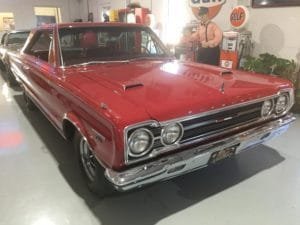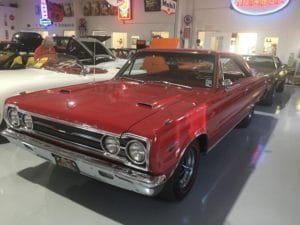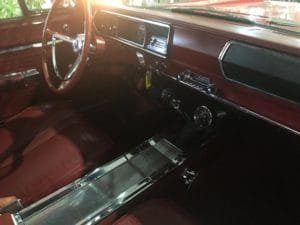Featured is a fine looking 1967 Plymouth Belvedere GTX. GTX was often referred to as “The Gentleman’s Muscle Car” The model represented Plymouth’s performance car with it’s big V-8 engine plus other performance items and was based on the two door Belvedere.

The Plymouth Belvedere was produced from 1954 to 1970. The Belvedere started out as a hardtop style for the 1951 Plymouth Cranbrook and eventually replaced the Cranbrook in 1954 as the top of the line Plymouth.
The Plymouth Belvedere GTX
It should be noted that there were other Plymouth performance models before the GTX, (some might say the 1957 Plymouth Fury) but it was not until 1967 that Plymouth offered one model with all the performance items considered standard. The Plymouth GTX provided them all. Another Plymouth model considered a muscle car was the Barracuda which received high marks from performance enthusiasts. Some consider the 1964 Barracuda fastback as the first sporty appearing Plymouth.

Handling was considered excellent with standard six-leaf rear springs, heavy duty shocks, torsion bars, and ball joints.
The Plymouth GTX and the Plymouth Road Runner
The GTX was introduced in 1967 and the Road Runner in 1968.
The Plymouth Belvedere GTX and the Plymouth Road Runner were in a way sister models. Many would say that the two models looked exactly the same but the technical specifications and prices were different.
When the Road Runner came out in 1968 it was considered the best muscle car ever although stripped down. The GTX then became the most luxurious trim of the Roadrunner.models. The GTX was introduced in 1967 and the Road Runner in 1968.
Plymouth marketed the GTX as an upscale performance offering while the Road Runner was marketed as a lower priced performance offering. They stripped the Road Runner down to keep it’s price down. As an example, bench seats was standard on the Road Runner with vinyl bucket and cloth/vinyl bucket seats available as an option.
The 1968 Plymouth Road Runner had several engines available. These were a 383 cubic inch V8, a 426 cubic inch Hemi V8 and a 440 cubic inch V-8.
1967 Plymouth Belvedere GTX Specifications
If a buyer wanted real firepower with his or hers Plymouth GTX there was no problem providing it. Standard with the 1967 Plymouth GTX was the big 440 cubic inch V8. Plymouth named this engine the Super Commando 440 and it put out 375 HP. Optional for buyers was even a more powerful engine.. MOPAR’s mighty 426 Hemi rated at 425 HP.
 Standard transmission was the three speed TorqueFlite automatic. Also available was a console mounted four speed manual.
Standard transmission was the three speed TorqueFlite automatic. Also available was a console mounted four speed manual.
Standard brakes were four wheel hydraulic drums with disc brakes optional.
Suspension on the GTX was heavy duty with six-leaf rear springs, heavy duty shocks, torsion bars, and ball joints.
Dimensions include a 116.0 inch wheelbase, 200.5 inch outside overall length, 76.4 inch width. Curb weight 3,748 Lbs.
Related Auto Museum Online articles are found on the links below..
1955 Plymouth Belvedere Sport Coupe
1959 Plymouth Belvedere Convertible
Reference material used for this article includes..Motor Trend Magazine, The Art of Mopar: Chrysler, Dodge, and Plymouth Muscle Cars by Tom Glatch..The Complete Book of Classic Dodge and Plymouth Muscle: Every Model from 1960 to 1974 by Mike Mueller.
 The 1967 Plymouth Belvedere GTX Collector Car
The 1967 Plymouth Belvedere GTX Collector Car
The 1967 Plymouth GTX is a popular collector car representing the first year of this particular model and is a rare classic. The GTX was a mid sized upscale performance muscle car with bucket seats and a chrome ringed steering wheel. This interior along with performance engines and some cosmetic differences set it apart from the standard Belvedere.
Current selling/auction prices for the 1967 Plymouth Belvedere GTX range in the area of $60,000 to $100,000. As always, originality, general condition, mileage, a degree and age of any restoration.
(Article and photos copyright Auto Museum Online)